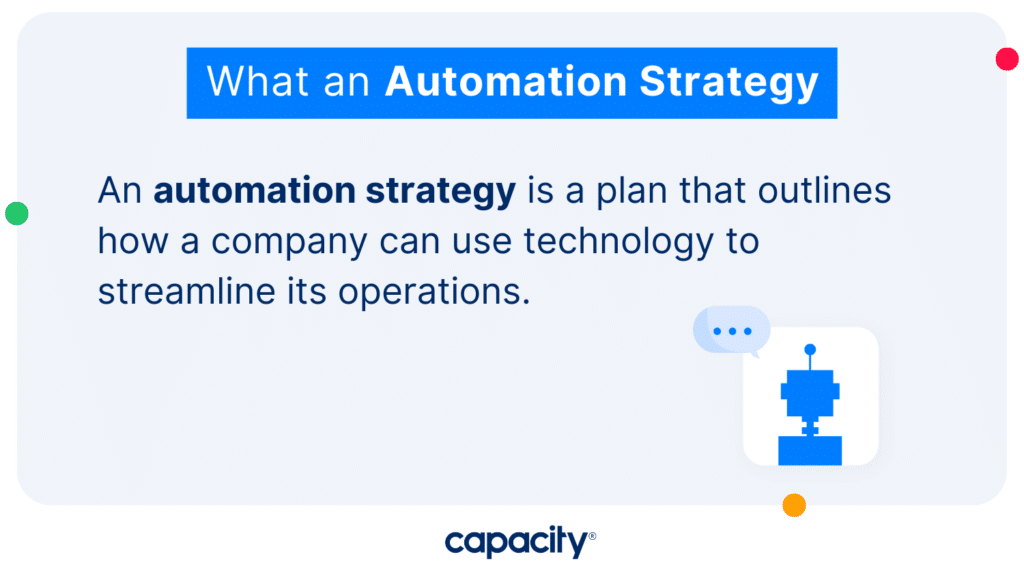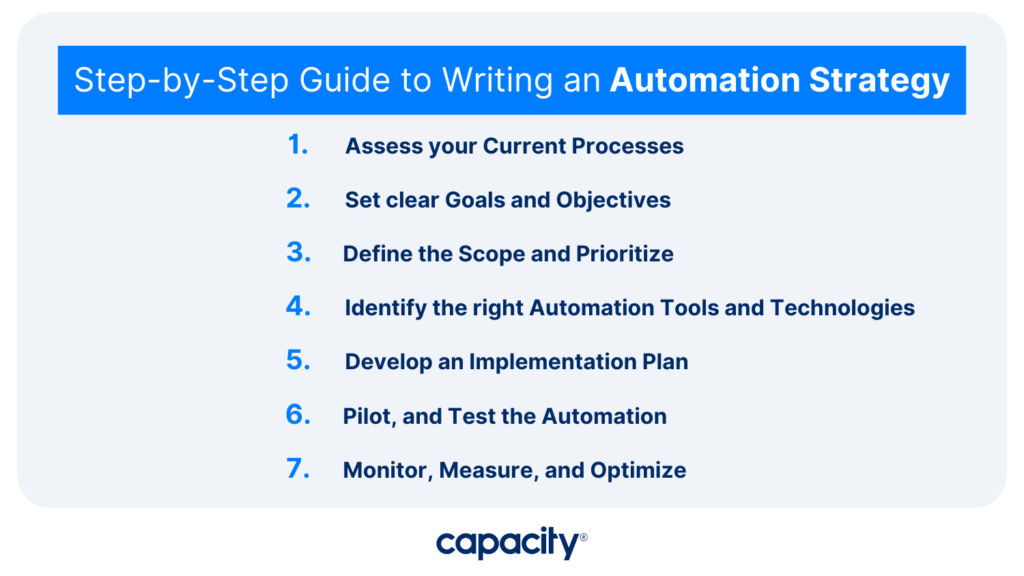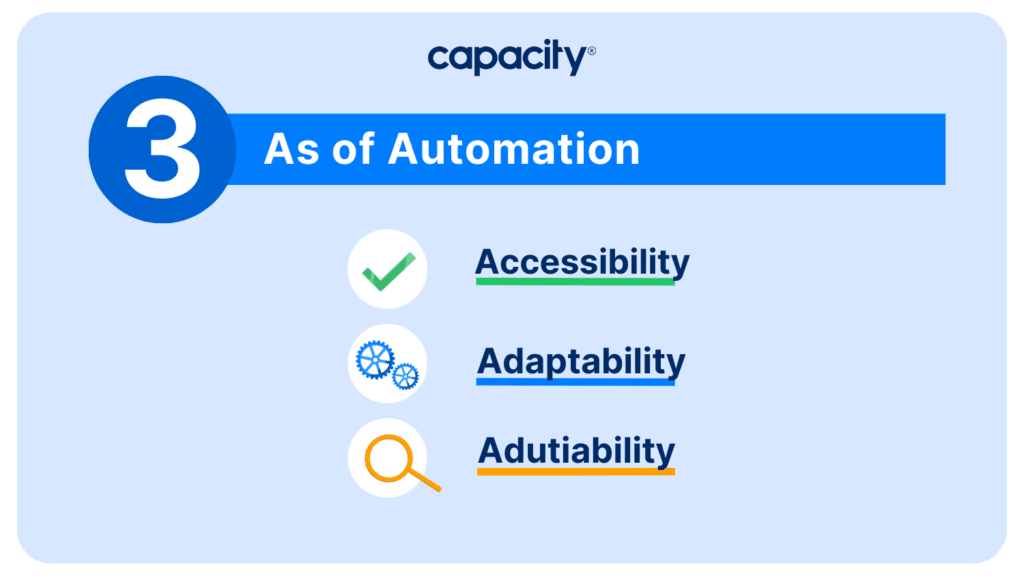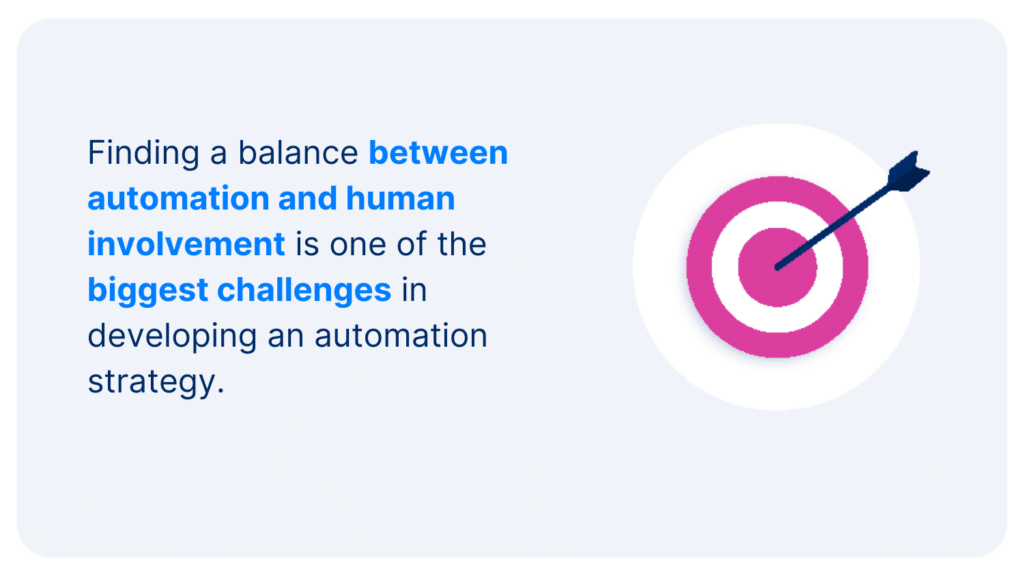Do you want to take your customer operations to the next level with automation? It’s no secret that automating key processes can save time, money – and most importantly – stress. An effective automation strategy can yield impressive results in shorter timeframes than manually-driven operations. And while understanding the potential of such technology is one thing, actually developing a strategy for its successful implementation is a whole other story. Not sure where to start? Don’t worry – we’ve got you covered. In this blog post, we’ll offer up a step-by-step guide to writing an effective automation strategy for IT directors and customer ops teams alike!
Understanding the Goals of Your Automation Strategy

An automation strategy is a plan that outlines how a company can use technology to streamline its operations. In today’s fast-paced world, businesses that rely on manual processes can struggle to keep up with competitors that already use automation strategies. An effective automation strategy includes several key components that help organizations prioritize tasks, allocate resources, and set goals for automation initiatives.
The first step involves identifying the goals and objectives that the organization wants to achieve through automation. Then, the scope and prioritization of the automation projects should be established. The next step is to allocate the necessary resources, including selecting the right tools and technologies. Finally, setting up a timeline with clear milestones helps to keep the project on track. By following a well-crafted automation strategy, organizations can improve their processes, streamline workflows, and stay ahead of the competition.
Your Step-by-Step Guide to Writing an Automation Strategy
Creating an effective automation strategy is crucial for organizations looking to streamline their operations. A well-executed automation strategy can help businesses enhance their productivity, streamline their workflows, and increase their revenue.

Identifying the goals of your automation strategy is the first step toward success. Therefore, it’s essential to assess your current processes and identify repetitive tasks that can be automated. Setting clear goals and objectives aligned with organizational objectives and defining measurable targets is the next step. Then, define the scope and prioritize based on impact and feasibility. Afterward, identify the right automation tools and technologies by researching available automation solutions and evaluating compatibility and scalability. It is also crucial to develop an implementation plan, pilot, and test the automation, and monitor, measure, and optimize continuously. Finally, with the right automation strategy, businesses can streamline their operations and improve their overall efficiency.
The 3 As of Automation
Automation strategy is crucial for any business looking to cut costs and increase efficiency. The 3 As of Automation are essential components that should not be overlooked when developing an automation strategy.

The first A, Accessibility, refers to ensuring that automation tools are easy to use and user-friendly. This means designing interfaces that are intuitive and require minimal training to operate. By prioritizing accessibility, businesses can ensure that automation adoption is seamless and widespread throughout the organization. The result is increased productivity and improved bottom-line results.
The second A in this strategy stands for Adaptability, which means being able to adjust to unexpected situations or handle edge cases. Building flexibility into your automation processes ensures that your workflows continue to run smoothly, even when things don’t go as planned. Exception handling is another critical component, allowing your systems to cope with errors and unexpected inputs without disrupting the entire operation. By prioritizing adaptability, your automation strategy can help you navigate any challenges that come your way, ensuring your business stays on track and ahead of the competition.
Automation has become an increasingly popular strategy in many industries, allowing companies to streamline processes and increase productivity. However, as automation becomes more widespread, it’s important to consider the implications of automated processes. That’s where the third A of automation comes in: adutiability. Auditability means tracking and documenting automated processes to ensure compliance and accountability. By prioritizing auditability in your automation strategy, you can have confidence in your processes and ensure that they’re meeting both internal and external standards. With auditability, you can streamline your workflow without sacrificing accountability.
Challenges and Best Practices

Creating an automation strategy can be a complex task. Finding a balance between automation and human involvement is one of the biggest challenges in this process. Automation can speed up processes and improve efficiency, but it needs to be balanced with human oversight to ensure quality and accuracy. Other challenges may include identifying the right automation tools, selecting the appropriate processes to automate, and training staff to adjust to these changes.
Best practices for overcoming these challenges include involving all stakeholders in the process, identifying clear success criteria from the start, and establishing a roadmap that outlines the necessary steps to reach the end goal. It’s important to identify who the stakeholders and end-users are, as they play a crucial role in the success of the automation strategy. Communication and collaboration among all parties involved is key to ensuring a successful automation strategy that is both effective and sustainable.
In conclusion, writing an automation strategy is crucial for any organization that wants to deliver exceptional customer experiences. It will help with aligning customer service and IT support departments while utilizing resources efficiently to keep operations running smoothly. By following the aforementioned steps, you will be on your way to creating a successful automation strategy: identify the goals of your automation strategy, assess your current infrastructure, analyze processes to identify opportunities for automation, set up goals and objectives, and define success criteria to measure performance. Automation allows customers to receive fast solutions as their interaction needs are interpreted quickly and accurately. Capacity provides a platform through which companies can create a customized solution model that enhances customer satisfaction whilst minimizing operational costs. Join the 1500+ Capacity customers and simplify your automation strategy. Get a demo today.

Automate Your Work
Capacity’s enterprise AI chatbot can help:
- Answer FAQs anytime, anywhere
- Find relevant documents within seconds
- Give surveys and collect feedback





